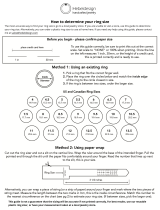
9
hold-off to prevent impacting the performance of other operations. It is, however, important to note that the hold-
off is not binary, (i.e. on or off) so, even if backup jobs are in process, some low level of housekeeping will still
take place which may have a slight impact on backup performance.
Housekeeping is an important process in order to maximise the deduplication efficiency of the appliance and, as
such, it is important to ensure that it has enough time to complete. Running backup, restore, tape offload and
replication operations with no break (i.e. 24 hours a day) will result in housekeeping never being able to
complete. As a general rule a number of minutes per day should be allowed for every 100 GB of data
overwritten on a virtual cartridge or NAS share. See Appendix A for numbers for each product.
For example: if, on a daily basis, the backup application overwrites two cartridges in different virtual libraries
with 400 GB of data on each cartridge, an HP D2D4106 appliance would need approximately 30 minutes of
quiescent time over the course of the next 24 hours to run housekeeping in order to de-reference data and
reclaim any free space.
Configuring backup rotation schemes correctly is very important to ensure the maximum efficiency of the product;
doing so reduces the amount of housekeeping that is required and creates a predictable load.
Large housekeeping loads are created if large numbers of cartridges are manually erased or re-formatted. In
general all media overwrites should be controlled by the backup rotation scheme so that they are predictable.
Best practice
Create enough D2D virtual library cartridges for at least one backup rotation schedule and then overwrite the
tape cartridges when the virtual library cartridge data expires or when the data is no longer useful. If a large
expired media pool exists due to a non optimum rotation policy then this will use up space on the D2D
appliance. See Housekeeping monitoring and control on page 71 for more detailed information.
Upstream and Backup Application considerations
Multi-stream vs. Multiplex
Multi-streaming is often confused with Multiplexing; these are however two different (but related) terms. Multi-
streaming is when multiple data streams are sent to the D2D Backup System simultaneously but separately.
Multiplexing is a configuration whereby data from multiple sources (for example multiple client servers) is backed
up to a single tape drive device by interleaving blocks of data from each server simultaneously and combined
into a single stream. Multiplexing is used with physical tape devices in order to maintain good performance, if
the source servers are slow because it aggregates multiple source server backups into a single stream.
A multiplexed data stream configuration is NOT recommended for use with a D2D system or any other
deduplicating device. This is because the interleaving of data from multiple sources is not consistent from one
backup to the next and significantly reduces the ability of the deduplication process to work effectively; it also
reduces performance. Care must be taken to ensure that multiplexing is not happening by default in a backup
application configuration. For example when using HP DataProtector to back up multiple client servers in a single
backup job, it will default to writing four concurrent multiplexed servers in a single stream. This must be disabled
by reducing the “Concurrency” configuration value for the tape device from 4 to 1.
Use multiple backup streams
The HP D2D system performs best with multiple backup streams sent to it simultaneously. For example an HP
D2D4112 G2 will back up data at approximately 80 MB/s for a single stream, however multiple streams can
deliver an aggregate performance in excess of 360 MB/s.




















